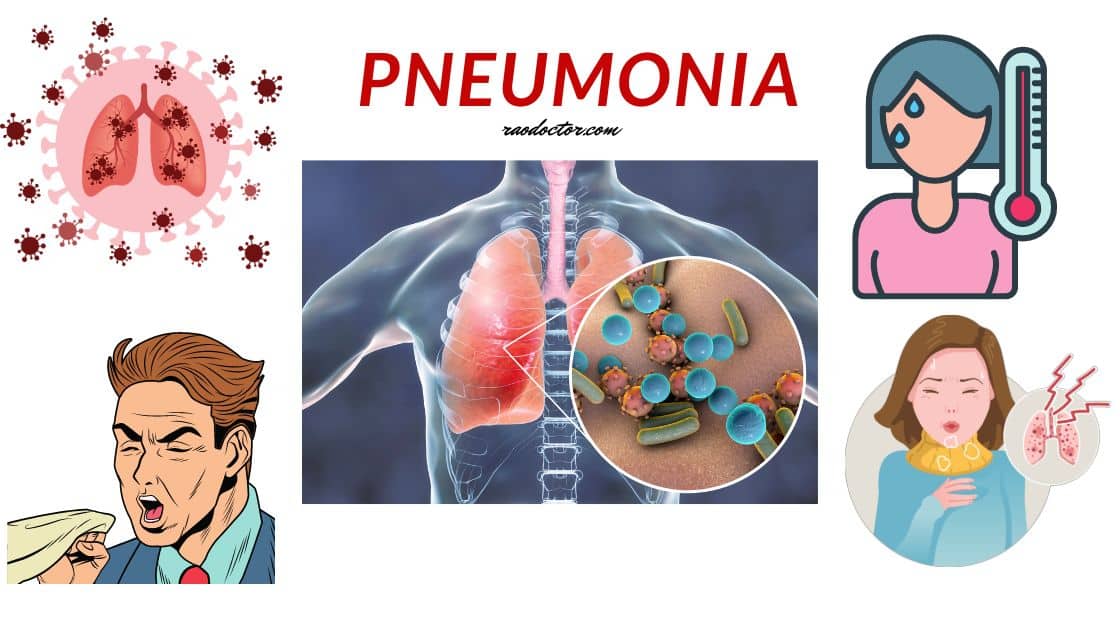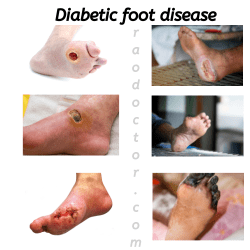In my last article prior to this one I said that my next article will be on Vertigo and Meniere’s disease. If you have not read the Part 1 of his series, you can do so here-
Now let us get on with learning about these two conditions.
Table of Contents
Understanding Vertigo-What is it?

Vertigo is a sensation of spinning or dizziness that can cause nausea, vomiting, and loss of balance. It is a common symptom of various underlying conditions such as inner ear disorders, migraines, and head injuries. Vertigo can be a severe condition that can affect a person’s ability to carry out daily activities.
Causes of Vertigo
Vertigo can be caused by various factors, but the most common ones include inner ear disorders, migraines, head injuries, and medication side effects. Inner ear disorders such as labyrinthitis and Meniere’s disease can affect the balance organs in the inner ear, leading to vertigo.
Migraines can also cause vertigo, especially if accompanied by visual disturbances. Head injuries can damage the balance organs in the inner ear, leading to vertigo. Finally, certain medications such as antibiotics and blood pressure drugs can cause vertigo as a side effect.
Symptoms of Vertigo
The most common symptom of vertigo is a spinning or whirling sensation in the head. Other symptoms may include dizziness, nausea, vomiting, and loss of balance. The symptoms can last for a few seconds to several hours, depending on the underlying cause.
What is the difference between dizziness and vertigo?
Vertigo and dizziness are not always the same. The table below will let you understand the difference between the two with related examples.
DIZZINESS VERSUS VERTIGO
| DIZZINESS | VERTIGO |
|---|---|
| Dizziness is a broader term that encompasses a range of sensations, including lightheadedness, unsteadiness, and a feeling of being off balance. | Vertigo is a specific type of dizziness characterized by a spinning or rotational sensation, as if the person or their surroundings are moving when they are not. |
| Example: Feeling lightheaded when standing up too quickly or experiencing a sense of unsteadiness after spinning in circles. | Example: A person with vertigo may feel as if the room is spinning around them, even though they are stationary |
| Dizziness can have various causes, including low blood pressure, dehydration, medication side effects, anxiety, or underlying medical conditions like anemia or heart problems. | Vertigo is often caused by a problem in the inner ear, such as BPPV (benign paroxysmal positional vertigo), Meniere's disease, or vestibular neuritis. |
| Example: Feeling dizzy after taking certain medications or experiencing dizziness as a symptom of an underlying health issue. | Example: BPPV occurs when small calcium crystals in the inner ear become dislodged and float into the fluid-filled canals, resulting in vertigo. |
| Dizziness, on the other hand, can manifest in different ways, such as feeling lightheaded, unsteady on the feet, or having a floating sensation. | Vertigo episodes tend to be intense but often brief, lasting seconds to minutes, while dizziness can persist for longer durations. |
| Example: Feeling lightheaded and needing to hold onto something for support or feeling like the ground is moving beneath one's feet. | Example: Vertigo caused by BPPV may occur in short episodes triggered by specific head movements, while dizziness from dehydration or medication side effects may last for hours. |
How is Vertigo diagnosed?
Vertigo is a symptom, not a diagnosis, so clinical methods are used to determine the underlying cause of the vertigo.
The first step taken by your doctor in diagnosing vertigo is a thorough medical history and physical examination, which may include checking blood pressure, heart rate, and neurological function.
If these are inconclusive, your doctor might suggest undergoing some specific clinical tests.
Some of the specific clinical methods that can be used include:
Dix-Hallpike maneuver:
This test is used to diagnose benign paroxysmal positional vertigo (BPPV), a common cause of vertigo. The patient is quickly moved from an upright position to a lying down position with their head turned to one side. If vertigo is triggered by this maneuver, it indicates BPPV.
Head impulse test (HIT):
This test is used to evaluate the function of the vestibulo-ocular reflex (VOR), which helps to stabilize vision during head movements. The patient is asked to focus on a target while the examiner quickly moves their head to the side. If the patient’s eyes do not stay fixed on the target, it suggests dysfunction in the VOR.
Romberg test:
This test assesses the patient’s balance and proprioception. The patient is asked to stand with their feet together and eyes closed. If they sway or lose balance, it could indicate a problem with the central nervous system or inner ear.
Audiometry:
Since hearing loss can sometimes be associated with vertigo, an audiometry test may be performed to evaluate the patient’s hearing function.
Electronystagmography (ENG):
This test measures involuntary eye movements (nystagmus) and can help identify inner ear abnormalities or vestibular dysfunction.
Magnetic resonance imaging (MRI):
In some cases, an MRI may be ordered to rule out any structural abnormalities or tumors like acoustic neuroma, which could be causing vertigo.
It is worth noting that these clinical methods are just a starting point, and additional tests or consultations with specialists, such as an otolaryngologist or neurologist, may be required to make a definitive diagnosis.
Treatment for Vertigo
The treatment for vertigo depends on the underlying cause or the type of vertigo you may have. To know the type of vertigo, you can read it here- Types of Vertigo.
In some cases, vertigo may resolve on its own, but in other cases, medication or physical therapy may be required.
Medications include:
- anti-nausea drugs like dimenhydrinate [Avomine, Dramamine] and
- vestibular suppressants like
- cinnarazine [Vertigon, Diziron] and
- betahistine [Vertin]
can help manage the symptoms of vertigo.
Physical therapy, such as the Epley maneuver, can help reposition the balance organs in the inner ear, reducing the severity and frequency of vertigo attacks.
Useful Resource: Diagnosing Vertigo
Understanding Meniere’s Disease-What is it?
Meniere’s disease is an inner ear problem that can cause dizzy spells, also called vertigo, and hearing loss. Most of the time, Meniere’s disease affects only one ear. It can happen at any age but usually starts between the ages of 40 to 60. It’s thought to be a lifelong condition.
Symptoms of Meniere’s disease include:

- Regular dizzy spells. You have a spinning feeling that starts and stops suddenly. Vertigo may start without warning.
- Hearing loss. Hearing loss in Meniere’s disease may come and go, especially early on. Over time, hearing loss can be permanent.
- Ringing in the ear (tinnitus). Tinnitus is the perception of a ringing, buzzing, roaring, whistling or hissing sound in your ear1.
Treatment for Meniere’s disease includes:
- Medications such as diuretics and motion sickness medications.
- Salt restriction and diuretics (water pills) help some people control dizziness.
- Other dietary and behavioral changes such as avoiding caffeine, alcohol and tobacco2.
If you are experiencing any of these symptoms, it is best to consult with your doctor for proper diagnosis and treatment12.
Meniere’s disease is a chronic condition that affects the inner ear, causing fluctuating hearing loss, vertigo, and tinnitus. It is a rare condition that affects approximately 0.2% of the global population. Meniere’s disease can significantly impact a person’s quality of life, leading to anxiety, depression, and social isolation.
Causes of Meniere’s Disease
The exact cause of Meniere’s disease is unknown, but it is believed to be caused by a combination of factors such as genetics, autoimmune disorders, and viral infections.
Meniere’s disease is characterized by the buildup of fluid in the inner ear, leading to pressure changes that affect the balance organs, causing vertigo, hearing loss, and tinnitus.
What are the risk factors of Meniere’s Disease
While the underlying cause of Meniere’s disease is still unknown, there are a number of risk factors that may predispose a person to have this issue. Some of these risk factors include:
- Chronic stress
- Smoking
- Abnormal immune system response
- Family history of Meniere disease
- Preexisting autoimmune disorders
- Allergies
- Traumato the head or ear.
Symptoms of Meniere’s Disease
The most common symptoms of Meniere’s disease include vertigo, tinnitus, fluctuating hearing loss, and a feeling of fullness in the ear. The symptoms can vary in severity and frequency, with some patients experiencing frequent and severe attacks, while others may have mild and infrequent symptoms.
Investigations for Meniere’s disease
- Audiometry: This is a hearing test that measures the individual’s ability to hear different frequencies and intensities of sound. It can help determine if there is any hearing loss associated with Meniere’s disease. For example, an audiogram may show a low-frequency sensorineural hearing loss.
- Vestibular Testing: This includes a variety of tests that assess the function of the inner ear and the vestibular system, which helps maintain balance. Common tests include electronystagmography (ENG), videonystagmography (VNG), and rotary chair testing. These tests can help identify any abnormalities in the vestibular system, such as nystagmus or abnormal eye movements.
- Electrocochleography (ECOG): This test measures the electrical responses of the inner ear in response to sound stimulation. It can help detect an increased endolymphatic pressure within the inner ear, which is a characteristic feature of Meniere’s disease.
- Imaging studies: Magnetic resonance imaging (MRI) scans can be useful in ruling out other causes of symptoms similar to Meniere’s disease, such as brain tumors or acoustic neuromas. An MRI can also help identify any structural abnormalities in the inner ear.
- Blood tests: While there is no specific blood test to diagnose Meniere’s disease, certain blood tests may be done to rule out other medical conditions that can present with similar symptoms. These may include tests for autoimmune disorders, thyroid function, and metabolic disorders.
Examples:
- If a patient presents with symptoms of Meniere’s disease, audiometry may show a characteristic low-frequency sensorineural hearing loss, confirming the diagnosis.
- Vestibular testing may reveal abnormal eye movements (nystagmus) during certain head movements, indicating dysfunction in the vestibular system.
- Electrocochleography may show an elevated cochlear microphonic (CM) to action potential (AP) ratio, suggesting increased endolymphatic pressure.
- An MRI scan may be ordered if the patient’s symptoms are atypical or if there is a suspicion of an underlying structural abnormality in the inner ear.
- Blood tests may be done to rule out other conditions that can mimic Meniere’s disease, such as autoimmune disorders or thyroid
Treatment for Meniere’s Disease
The treatment for Meniere’s disease depends on the severity of the symptoms. In some cases, lifestyle changes such as reducing salt intake and stress management can help manage the symptoms.
In other cases, medication such as diuretics and anti-nausea drugs can help manage the symptoms. In severe cases, surgery may be required to remove the fluid buildup in the inner ear, reducing the severity and frequency of the symptoms.
Medical treatment for Meniere’s disease includes:
- Medications such as diuretics and motion sickness medications.
- Salt restriction and diuretics (water pills) help some people control dizziness.
- Other dietary and behavioral changes such as avoiding caffeine, alcohol and tobacco .
In severe cases, surgery or rehabilitation therapy may be recommended to reduce episodes of vertigo and hearing loss.
Prevention of Inner Ear Disorders
Preventing inner ear disorders involves taking care of your ears and reducing exposure to loud noises. Some tips for preventing inner ear disorders include wearing earplugs or earmuffs when exposed to loud noises, avoiding putting foreign objects in the ear, and managing stress levels.
Regular checkups with an audiologist can also help detect any early signs of hearing loss or other inner ear disorders, allowing for early intervention.
Conclusion
In conclusion, inner ear disorders such as tinnitus, vertigo, and Meniere’s disease can significantly impact a person’s quality of life.
Understanding the causes and symptoms of these conditions is crucial in managing and treating them effectively.
Lifestyle changes, medication, and physical therapy can help manage the symptoms of inner ear disorders.
Taking care of your ears and reducing exposure to loud noises can also help prevent these conditions from developing.
If you experience any symptoms of inner ear disorders, it is essential to seek medical attention promptly to prevent further damage to your hearing and balance.
If you have found this article useful, do consider sharing it to your social media groups/contacts by clicking on the icons at the bottom of this article. Alternately you can Click to Tweet below-
Diseases of Internal Ear-Part 2-Vertigo and Meniere's disease Share on XMy next article will be on 10 Foods that give you enough Calcium to keep your Bones Healthy and Strong. So, do stay tuned to my blogs by subscribing to it below.
Adios




